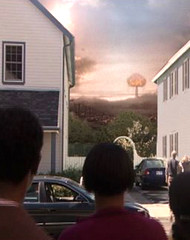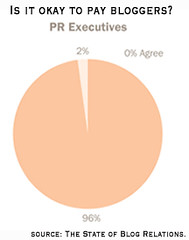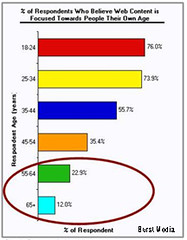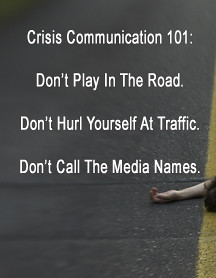Mostly because network executives had taken to touting the online success of Jericho for several months, fans still seemed uncertain as the Nielsen-owned Hollywood Reporter broke the news today. CBS is canceling Jericho. The story was confirmed by E! Online.
The ending chosen by CBS next Tuesday will wrap up the season's story line, closing what has been a yearlong challenge with plenty of trials and triumphs for the fan base that convinced CBS to give its show another chance. The outcome, as mentioned on Wednesday, seems to line up lock step with the five reasons being considered to let the show go.
"'Jericho' is unique because the fans saved it — watching it on the Internet and streaming and iTunes downloads, all those things that are not being counted," The Hollywood Reporter cited executive producer Carol Barbee saying in a recent interview. "That's what 'Jericho' will be known for."
She's right. Jericho fans have plenty to be proud of, especially their efforts in doing what most said could not be done — winning a short second season after it was cancelled the first time. While some rumors persist that Jericho may move elsewhere, it seems unlikely that a move would produce a show that resembles the original.
Still, Jericho fans are not ready to give up. They are currently assessing what to do next. One thing they need to avoid, in my opinion, is campaigning other networks like fans of the The Black Donnellys (TBD) did last year.
While the hearts of TBD fans were in the right place, campaigning to move a show from one network to another is a more daunting task, even more unlikely, and further fragments any campaign. If Jericho fans campaign for a move, any campaign needs to be aimed at CBS.
I will give credit to CBS for not waiting until next Thursday to confirm the cancellation, though it might have been better to share the news with fans first. Doing so would have demonstrated that it is starting to understand social media. There is still more work to be done there. Obviously.

The ending chosen by CBS next Tuesday will wrap up the season's story line, closing what has been a yearlong challenge with plenty of trials and triumphs for the fan base that convinced CBS to give its show another chance. The outcome, as mentioned on Wednesday, seems to line up lock step with the five reasons being considered to let the show go.
"'Jericho' is unique because the fans saved it — watching it on the Internet and streaming and iTunes downloads, all those things that are not being counted," The Hollywood Reporter cited executive producer Carol Barbee saying in a recent interview. "That's what 'Jericho' will be known for."
She's right. Jericho fans have plenty to be proud of, especially their efforts in doing what most said could not be done — winning a short second season after it was cancelled the first time. While some rumors persist that Jericho may move elsewhere, it seems unlikely that a move would produce a show that resembles the original.
Still, Jericho fans are not ready to give up. They are currently assessing what to do next. One thing they need to avoid, in my opinion, is campaigning other networks like fans of the The Black Donnellys (TBD) did last year.
While the hearts of TBD fans were in the right place, campaigning to move a show from one network to another is a more daunting task, even more unlikely, and further fragments any campaign. If Jericho fans campaign for a move, any campaign needs to be aimed at CBS.
I will give credit to CBS for not waiting until next Thursday to confirm the cancellation, though it might have been better to share the news with fans first. Doing so would have demonstrated that it is starting to understand social media. There is still more work to be done there. Obviously.






















